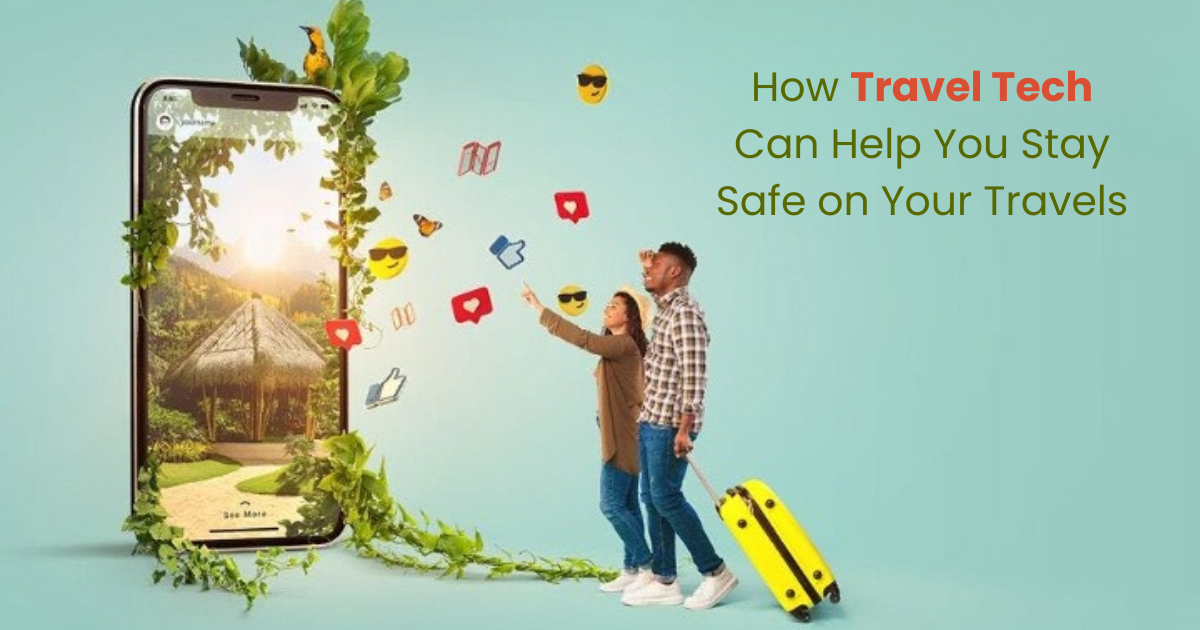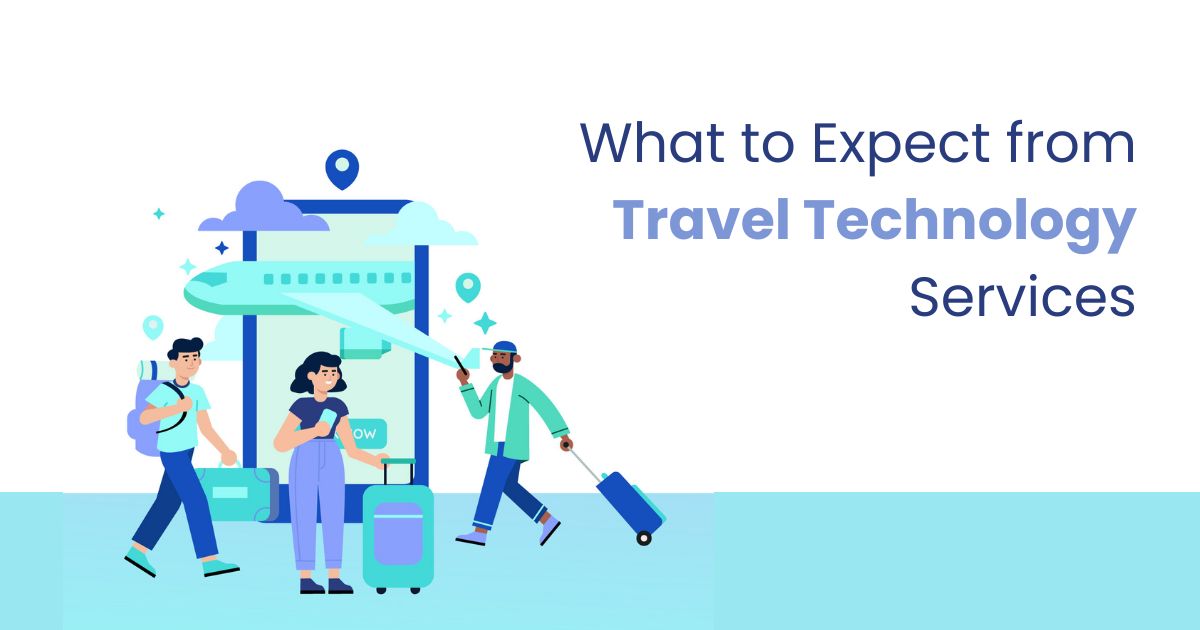In today’s fast-paced, digitally-driven world, travel technology has revolutionized the way we explore the globe. The use of smartphones, apps, and digital services has transformed every stage of the travel experience—from booking flights and hotels to navigating foreign cities. However, one of the most crucial benefits of travel technology, which is often overlooked, is its potential to enhance safety. As we journey across borders and oceans, staying safe should be a top priority, and innovative travel technology solutions can help you mitigate risks, avoid dangerous situations, and ensure your well-being at all times.
Travel Technology Solutions: Enhancing Your Travel Journey with Advanced Technology SolutionsIn this article, we’ll explore in-depth how travel tech can help you stay safe during your travels, from pre-trip planning to navigating foreign lands, managing emergencies, and even protecting your personal data. By leveraging the right tools, apps, and services, you can confidently embark on your adventures knowing that you’re prepared for any situation that may arise.
Introduction to Travel Technology and Safety
Travel technology has evolved rapidly over the past few decades, providing travelers with unparalleled convenience. Whether you’re traveling for business or leisure, the ability to access real-time information, communicate with locals, and manage logistics has become a cornerstone of modern travel. However, beyond the convenience factor, travel tech plays a crucial role in safeguarding travelers.
Staying safe while traveling encompasses more than just avoiding physical dangers; it includes safeguarding your health, protecting your personal data, and being prepared for emergencies. From researching your destination’s safety profile to tracking your location and accessing emergency services, travel technology solutions offer powerful tools to address all these concerns.
As more people become aware of the benefits of travel tech, Travel Technology companies are developing more sophisticated apps and services to meet the growing demand for safer travel experiences.
Pre-Trip Safety Planning with Travel Tech
Before you even step foot in a foreign country, travel technology can help you ensure that your journey is as safe as possible. Pre-trip planning is crucial for identifying risks, making informed decisions, and preparing for the unexpected.
A. Researching Destinations
One of the first steps to staying safe on your travels is thoroughly researching your destination. With the rise of travel apps and websites, finding comprehensive, real-time information about a country’s safety situation has never been easier. Travel tech allows you to:
- Access up-to-date information on a destination’s crime rates, political stability, and health risks.
- Use government-issued travel advisories from platforms like the U.S. Department of State or other local sources.
- Read traveler reviews to get a sense of the safety of neighborhoods, hotels, and attractions.
For example, apps like TripIt and Google Travel provide real-time alerts about political unrest, natural disasters, or other hazards. By staying informed, you can plan your itinerary accordingly and avoid risky areas.
B. Booking Accommodations with Safety Features
Choosing safe accommodations is one of the most critical decisions you can make while traveling. Travel technology platforms such as Airbnb, Booking.com, and TripAdvisor allow users to filter search results based on safety features like:
- Security personnel or 24-hour front desk services.
- CCTV or surveillance systems.
- Secure access to the premises (e.g., key cards, biometric access).
- Proximity to hospitals, police stations, or other essential services.
These features, combined with user reviews, help ensure you’re staying in a location where safety measures are prioritized.
C. Travel Insurance Solutions
While travel insurance is a necessity for any trip, choosing the right insurance plan that covers all potential risks can be overwhelming. Today’s Travel Technology companies have simplified this process by offering digital insurance platforms. These tools allow travelers to compare multiple insurance providers based on factors such as:
- Emergency medical evacuation.
- Trip cancellation or interruption coverage.
- Theft or loss of personal belongings.
- Coverage for adventure activities or extreme sports.
Apps like Allianz Travel Insurance and World Nomads offer customizable plans and real-time claims support. Moreover, some digital insurance platforms provide real-time assistance and medical helplines, ensuring you have the support you need when things go wrong.
Real-Time Navigation and Location Tracking
One of the biggest advantages of travel technology is its ability to guide you in real-time, no matter where you are. Whether you’re trying to navigate a new city, find a safe route, or check local transportation options, these tools help you stay on track and avoid potentially dangerous situations.
A. GPS and Offline Maps
Travelers today no longer need to rely on paper maps or asking for directions. GPS-enabled apps like Google Maps, Apple Maps, and Maps.me provide precise, real-time navigation so you can avoid getting lost in unfamiliar places. Additionally, most of these apps allow you to download offline maps, so you can still find your way even without an internet connection—an essential feature for remote areas with limited connectivity.
Some travel navigation apps also offer safety warnings by:
- Highlighting crime hotspots or areas known for tourist scams.
- Offering suggested routes that are safer for solo or nighttime travel.
- Recommending well-lit or pedestrian-friendly streets.
B. Real-Time Public Transportation Updates
Understanding local public transportation can be a challenge for travelers, especially in a foreign country with different systems. Apps like Citymapper, Rome2Rio, and Google Maps provide real-time updates on public transport options, helping you make informed decisions about how to get from point A to point B safely.
These apps can be particularly useful for identifying safe routes and avoiding:
- Overcrowded buses or trains during peak hours, which can increase the risk of pickpocketing.
- Delays or service disruptions that could leave you stranded in unfamiliar areas.
- Unsafe transportation options like unlicensed taxis.
C. Location Sharing for Peace of Mind
One of the simplest ways to enhance your safety while traveling is to share your location with trusted family members or friends. Location-sharing apps such as Find My (for Apple devices) and Google’s Trusted Contacts allow real-time tracking of your movements. If something goes wrong or you miss a scheduled check-in, your emergency contacts can locate you and offer assistance.
Location sharing is especially useful for solo travelers, as it provides an added layer of security.
Emergency Response and Crisis Management
Emergencies are unpredictable, but with travel tech, you can be better prepared to handle them. From accessing local emergency services to receiving real-time alerts, technology can play a vital role in ensuring your safety during a crisis.
A. Accessing Local Emergency Services
When you’re in an unfamiliar country, knowing how to contact local emergency services can be daunting. Fortunately, many travel apps now integrate local emergency numbers into their platforms, allowing you to make quick and direct calls if needed.
For instance, apps like TripWhistle and Emergency Call offer global access to emergency numbers for police, fire, and medical services. In addition, some countries have developed their own apps that provide access to their specific emergency hotlines.
B. Emergency Alert Systems
Various travel apps and platforms send real-time alerts to travelers in case of sudden emergencies, such as natural disasters, terrorist attacks, or other crises. These alerts often provide instructions on how to stay safe or when to evacuate certain areas.
The U.S. Department of State’s Smart Traveler Enrollment Program (STEP) is a great example of a government-backed alert system that provides travelers with safety updates about their destination.
C. Translation Tools for Better Communication
Language barriers can become significant obstacles during an emergency. If you cannot effectively communicate with locals, you may struggle to seek help. Translation apps like Google Translate or iTranslate can bridge this gap by:
- Offering real-time voice translation.
- Providing text translations for written signs or documents.
- Helping you communicate with local emergency personnel in their native language.
This technology is particularly valuable when seeking medical assistance or reporting a crime abroad.
Health and Wellness Tech for Travelers
Health is one of the most important aspects of travel safety, especially when you’re in unfamiliar environments where local health risks may differ from what you’re used to. Fortunately, travel tech can help you monitor your health, access medical assistance, and mitigate risks.
A. Accessing Medical Help Abroad
Finding quality healthcare in a foreign country can be a challenge, but travel technology has made it easier to locate medical facilities and professionals when you need them. Apps like Air Doctor and MyTravelHealth allow you to:
- Search for nearby doctors, hospitals, or clinics.
- View reviews from other travelers and locals.
- Access virtual medical consultations via telemedicine.
These platforms ensure you can receive the medical attention you need, regardless of your location.
B. Health Apps for Monitoring Travel Health
Keeping track of your health while traveling is important to avoid illnesses, especially when exposed to different climates, time zones, or local diseases. Several health apps can monitor key health metrics such as heart rate, sleep patterns, and hydration levels, helping you maintain your well-being.
For instance, apps like Fitbit and Apple Health can track your physical activity, sleep, and nutrition, while providing reminders to stay hydrated or take breaks during long travel days.
C. Managing Travel-Related Health Risks
Many travel destinations come with specific health risks, such as exposure to tropical diseases, high altitudes, or extreme weather conditions. Travel tech can help you prepare for and manage these risks by:
- Offering vaccination reminders and advice for travel-related diseases.
- Monitoring air quality, UV index, and pollution levels in real-time.
- Providing tips for acclimatizing to altitude or extreme temperatures.
With the right tools, you can proactively protect your health during your travels.
Data Security While Traveling
In today’s digital age, data security is a critical concern for travelers. From booking flights and accommodations to using public Wi-Fi, travelers are often at risk of data breaches and cyber-attacks. Here’s how travel tech can help you protect your personal information.
A. Protecting Personal Data
When traveling, your personal information—including your passport number, credit card details, and travel itinerary—can be vulnerable to theft or fraud. To mitigate these risks, many travel apps offer secure storage for sensitive information, allowing you to:
- Store documents securely in password-protected digital wallets.
- Use encrypted cloud services to access your data across devices.
- Set up two-factor authentication for additional security.
Apps like LastPass and Dashlane are great options for securely managing your personal information while traveling.
B. Using Secure Payment Methods
When making payments abroad, you’re often at risk of fraud or unauthorized charges. Travel technology offers secure payment solutions that help protect your financial information, such as:
- Using mobile payment platforms like Apple Pay or Google Pay for secure transactions.
- Prepaid travel cards that allow you to load a specific amount of money for use during your trip.
- Virtual credit cards that provide one-time-use card numbers for online purchases.
These solutions ensure your transactions remain secure, even when shopping or dining abroad.
C. Avoiding Cybersecurity Threats
Public Wi-Fi networks, common in airports, hotels, and cafes, can pose significant cybersecurity risks for travelers. Cybercriminals often exploit unsecured networks to access personal information or install malware on your device. To protect yourself:
- Use a Virtual Private Network (VPN) to encrypt your internet connection.
- Avoid accessing sensitive accounts (such as online banking) over public Wi-Fi.
- Enable automatic software updates to ensure your devices are protected against the latest security threats.
Cybersecurity apps like Norton Mobile Security and ExpressVPN can add an extra layer of protection to your devices while you’re on the road.
Safety Tips for Solo Travelers Using Technology
Solo travel is an enriching and empowering experience, but it also comes with unique safety concerns. Fortunately, travel tech offers several tools and strategies to help solo travelers stay safe:
- Use location-sharing apps to let loved ones know your whereabouts.
- Plan your itinerary with safety in mind, using travel apps to research safe neighborhoods and transportation options.
- Stay connected by carrying portable chargers or extra batteries to ensure your devices don’t lose power during critical moments.
- Rely on safety apps like Noonlight, which allows you to alert authorities in case of an emergency with just the press of a button.
By leveraging these technologies, solo travelers can explore new destinations with confidence, knowing that help is always within reach.
Future Trends in Travel Safety Technology
As technology continues to evolve, so too will the ways in which it enhances travel safety. Looking ahead, there are several trends and innovations that are expected to further revolutionize the travel industry and provide travelers with even greater peace of mind.
A. Artificial Intelligence (AI) for Predictive Safety
Artificial Intelligence is becoming increasingly integral to travel safety. In the near future, AI-powered tools will play a larger role in helping travelers stay safe by predicting and mitigating risks before they occur. Some examples include:
- Predictive analytics for weather and natural disaster alerts: AI will analyze weather patterns and natural disaster risks, sending real-time alerts to travelers and helping them make informed decisions.
- Smart travel assistance: AI-powered travel assistants will provide personalized safety recommendations based on your travel history, preferences, and current conditions at your destination.
- Real-time crime monitoring: AI systems can track crime patterns in cities and neighborhoods, providing travelers with up-to-date safety information on where to avoid.
As AI technology becomes more sophisticated, its ability to keep travelers informed and safe will continue to grow.
B. Biometric Identification for Seamless Security
Biometric technology is already transforming airport security, and it will soon become standard practice in many other areas of travel safety. By using unique biological markers, such as fingerprints, facial recognition, or retinal scans, biometric identification can:
- Speed up security checks and immigration processes, reducing the risk of long wait times and crowded environments.
- Ensure secure and personalized access to hotel rooms, flights, and other services.
- Protect your identity and personal data from theft, fraud, or mismanagement.
As biometric identification becomes more widely adopted, travelers can expect safer and more convenient experiences, especially in high-security environments like airports and borders.
C. Virtual and Augmented Reality (VR/AR) for Safety Training
Virtual and augmented reality technologies are poised to change how travelers prepare for potential safety risks. These immersive technologies can simulate real-life scenarios, helping travelers better understand how to handle emergencies. Applications of VR/AR for travel safety include:
- Virtual safety training: Before embarking on adventurous activities such as scuba diving or mountain climbing, travelers can undergo virtual safety training to learn essential skills and safety procedures.
- AR-powered city guides: Augmented reality city guides can overlay important safety information on your smartphone’s camera view, highlighting safe routes, emergency locations, and nearby shelters.
- Realistic disaster simulations: Travelers can use VR to simulate emergency situations like earthquakes or fires, helping them practice evacuation procedures and emergency response in a safe, controlled environment.
These technologies will equip travelers with the knowledge and confidence to stay safe in any situation.
D. Internet of Things (IoT) for Real-Time Monitoring
The Internet of Things (IoT) will continue to play a significant role in travel safety, with connected devices offering real-time monitoring and insights that can help prevent potential risks. For example:
- Smart luggage equipped with GPS tracking and security features will allow travelers to monitor their belongings in real-time and receive alerts if their luggage is tampered with or goes missing.
- Wearable tech such as smartwatches and fitness trackers will integrate with travel safety apps to offer real-time health and safety insights, including tracking heart rate, location, and emergency alerts.
- Smart hotel rooms will use IoT devices to monitor air quality, fire hazards, and energy consumption, creating safer environments for travelers.
The IoT ecosystem will continue to expand, offering travelers more ways to stay connected, informed, and secure throughout their journeys.
Conclusion:
In today’s connected world, travel technology has become an essential companion for staying safe on your travels. Whether you’re embarking on a solo journey or traveling with family, the right tech tools can provide peace of mind and ensure your safety from start to finish.
By using travel apps and platforms for destination research, navigation, emergency response, health monitoring, and data security, you can mitigate risks and be better prepared for whatever challenges come your way.
The role of a Travel Technology company is more crucial than ever, as these companies continue to develop and offer innovative solutions that enhance safety, convenience, and overall travel experiences. Whether you’re a seasoned traveler or planning your first adventure, integrating travel tech into your journey is one of the smartest decisions you can make.
With the right travel technology solutions by your side, you can explore the world confidently, knowing you’re well-prepared to handle any situation that comes your way. Safe travels!






